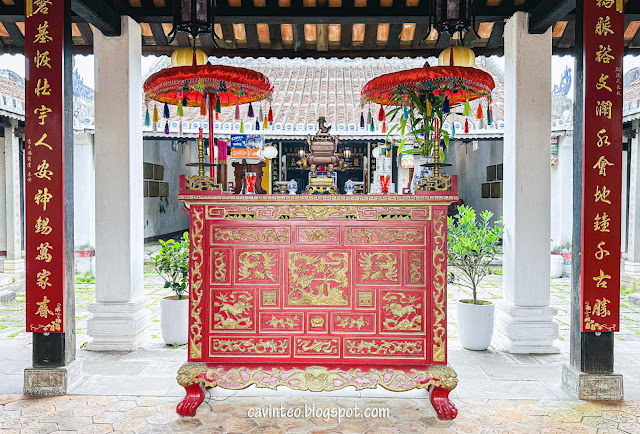While jogging in the ancient city of Hoi An, I chanced upon this quiet little area known as a communal house in Vietnam, which was like an enhanced community centre that embodies "culture, spirit and religion".
Honestly, I thought it was just one of the many temples found in the city but one thing that stood out; instead of lions, elephants guarded the main building!
Stepping in for a closer look; I was actually only halfway through my jog but this intrigued me enough to make me stop. Would there be anything interesting?
Really just a very temple setting. Communal houses typically honor the guardian of the village and aside from being the administrative office of a village, it is also the site for village festivals. Just wondering in the modern era, are they still as relevant?
Something caught my attention! p.s. not the plaques. I might recognize the individual characters yet I can't really catch the meaning once everything is connected.
Anyway, the extracts of old paintings and maps attracted me; and interestingly, Hoi An was named after a communal village, although Westerners tend to call it Faifoo. There were numerous changes over the years until it was granted as the permanent name in 2008.
A door that served no purpose!
Props for the lion dance that appeared significantly different from the Chinese version, which was a lot more intimidating. Oh well, I could be wrong as this was the first time I chanced upon the props of lion dance in Vietnam.
I was going to explore more when an elderly gentleman started chasing me out, spewing Vietnamese in an angry manner. Obviously, I don't understand and could have only assumed I have maybe mistakenly trespassed? Sigh.
=====
Address
27 Lê Lợi, Old Town,
Hội An, Quảng Nam,
Vietnam
Map
As above.
Floor Plan
As above.












No comments:
Post a Comment